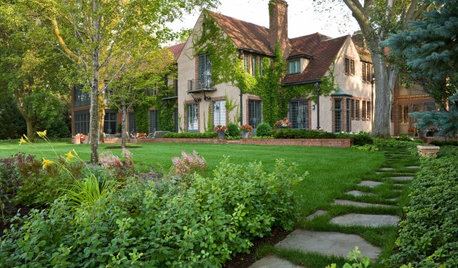English Ivy question---please don't YELL at me.
Seeds_of_Grace
19 years ago
Related Stories

GROUND COVERSNative Alternatives to English Ivy, Japanese Pachysandra and Periwinkle
These shade-loving ground covers are good for the environment and say something about where you are
Full Story
HOUSEPLANTSMother-in-Law's Tongue: Surprisingly Easy to Please
This low-maintenance, high-impact houseplant fits in with any design and can clear the air, too
Full Story
WORKING WITH PROS12 Questions Your Interior Designer Should Ask You
The best decorators aren’t dictators — and they’re not mind readers either. To understand your tastes, they need this essential info
Full Story
MOST POPULAR8 Questions to Ask Yourself Before Meeting With Your Designer
Thinking in advance about how you use your space will get your first design consultation off to its best start
Full Story
KITCHEN DESIGN9 Questions to Ask When Planning a Kitchen Pantry
Avoid blunders and get the storage space and layout you need by asking these questions before you begin
Full Story
SELLING YOUR HOUSE15 Questions to Ask When Interviewing a Real Estate Agent
Here’s what you should find out before selecting an agent to sell your home
Full Story
EXTERIORSCurb Appeal Feeling a Little Off? Some Questions to Consider
Color, scale, proportion, trim ... 14 things to think about if your exterior is bugging you
Full Story
GARDENING GUIDESLay of the Landscape: English-Style Gardens
Stately and formal meet natural and romantic in English-inspired landscapes
Full Story
DECORATING GUIDESA Handy Guide to English Antiques
Buying and owning old furniture is more fun and interesting when you know a little history
Full Story






bolecke
moosedog
Related Professionals
East Rancho Dominguez Landscape Architects & Landscape Designers · Garden City Landscape Architects & Landscape Designers · Middle River Landscape Architects & Landscape Designers · Redondo Beach Landscape Architects & Landscape Designers · Willowick Landscape Architects & Landscape Designers · White Oak Landscape Architects & Landscape Designers · Alpharetta Landscape Contractors · Marlborough Landscape Contractors · Pleasant Hill Landscape Contractors · Suitland Landscape Contractors · Selma Landscape Contractors · Grover Beach Fence Contractors · Salida Fence Contractors · Zion Fence Contractors · Westmont Ironworkbakemom_gw
bolecke
superfreak
plantsnobin
MeMyselfAndI
ForestParker
ohiogal
Seeds_of_GraceOriginal Author
Dagget
MeMyselfAndI
Pipanella
MeMyselfAndI
chateauclubcrest
marty_h
calliope
gluecille
calliope
zakk_attakk
taxus_man